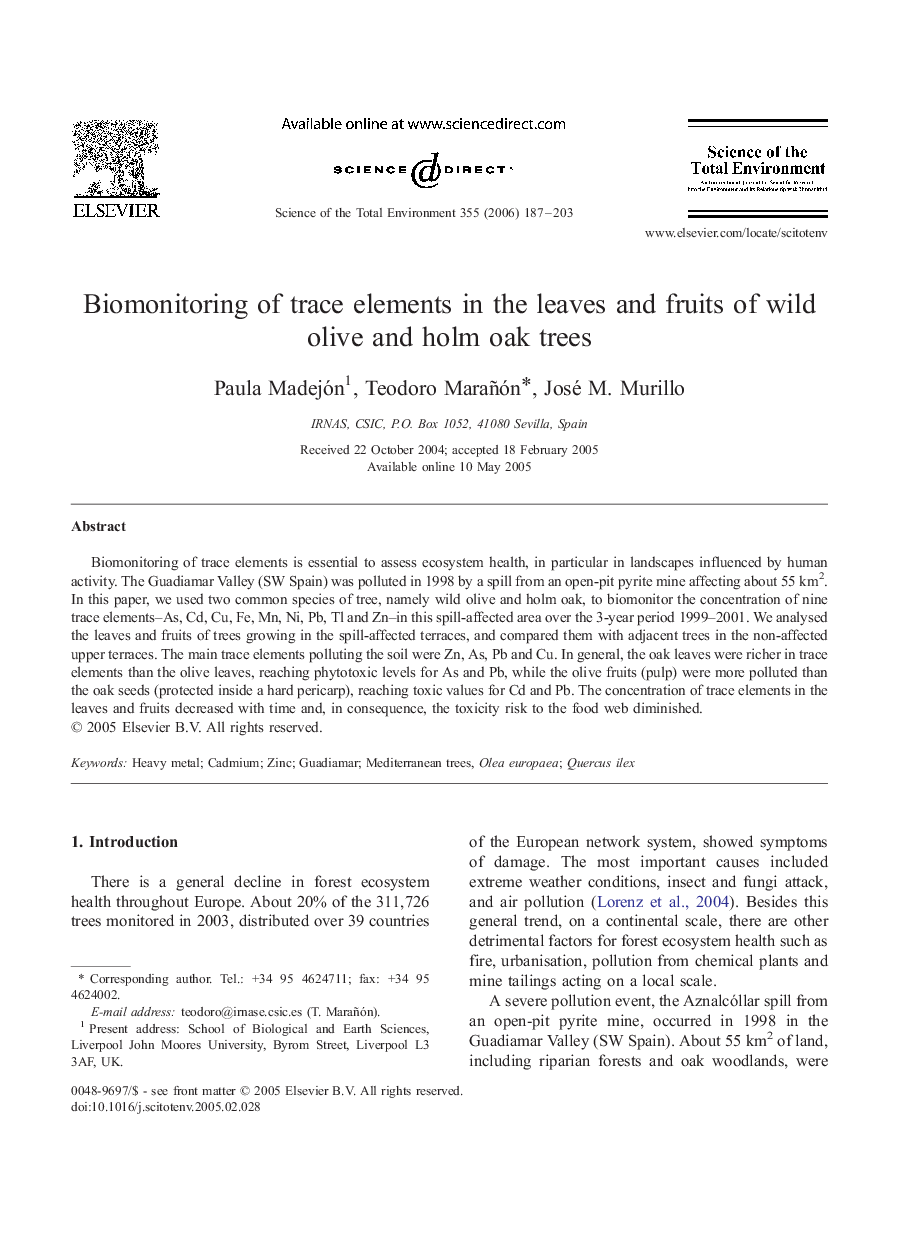| Article ID | Journal | Published Year | Pages | File Type |
|---|---|---|---|---|
| 4434389 | Science of The Total Environment | 2006 | 17 Pages |
Biomonitoring of trace elements is essential to assess ecosystem health, in particular in landscapes influenced by human activity. The Guadiamar Valley (SW Spain) was polluted in 1998 by a spill from an open-pit pyrite mine affecting about 55 km2. In this paper, we used two common species of tree, namely wild olive and holm oak, to biomonitor the concentration of nine trace elements–As, Cd, Cu, Fe, Mn, Ni, Pb, Tl and Zn–in this spill-affected area over the 3-year period 1999–2001. We analysed the leaves and fruits of trees growing in the spill-affected terraces, and compared them with adjacent trees in the non-affected upper terraces. The main trace elements polluting the soil were Zn, As, Pb and Cu. In general, the oak leaves were richer in trace elements than the olive leaves, reaching phytotoxic levels for As and Pb, while the olive fruits (pulp) were more polluted than the oak seeds (protected inside a hard pericarp), reaching toxic values for Cd and Pb. The concentration of trace elements in the leaves and fruits decreased with time and, in consequence, the toxicity risk to the food web diminished.
